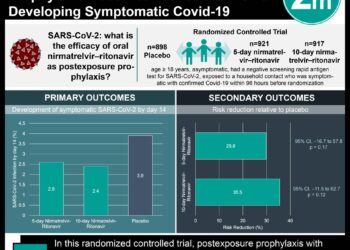Decrease in influenza transmission with COVID-19 interventions in Hong Kong
1. Non-pharmaceutical interventions, including border closures, quarantine and isolation, social distancing, and other changes in population behavior were associated with a reduction of COVID-19 and influenza transmission in Hong Kong
Evidence Rating: 3 (Average)
As the COVID-19 pandemic continues to progress, there continue to be varying public health measures and strategies adopted by different municipalities and nations to mitigate transmission. While some cities and countries are quick to implement lockdown measures and promote social distancing for example, others are reluctant to do so, often due to its economic implications. In this study, researchers analyzed the transmission dynamics of COVID-19 in Hong Kong, a city that was relatively quick to implement public health measures such as border entry restrictions, quarantine of cases, and population behavior changes such as social distancing and implementation of personal protective measures. Specifically, data of laboratory confirmed cases of COVID-19 cases, in addition to influenza hospitalizations, were used to estimate the daily effective reproduction number (Rt) of COVID-19 and influenza A H1N1. Following implementation of social distancing measures and changes in population behaviors in late January, COVID-19 transmissibility estimated by Rt appeared to decline, and remain stable at the critical threshold of 1 for 8 weeks in Hong Kong until March. Interestingly however, there was a substantial decrease in influenza transmission, with a 44% (95% CI 34–53%) reduction in transmissibility, from an Rt of 1·28 (95% CI 1·26–1·30) before the beginning of the school closures to 0·72 (0·70–0·74) during the closure weeks, in which pediatric hospitalization rates also declined during this time span. As both COVID-19 and influenza have similar modes of transmission, data from this observational study suggest that public health measures such as social distancing and isolation are effective in reducing transmissibility. Although no single measure can be identified as the most responsible for this trend, these findings reinforce the importance of the cumulative efforts taken on by governments and communities across the world currently, as they may be critical in mitigating the effects of this pandemic.
Click to read the study in Lancet Public Health
Image: PD
©2020 2 Minute Medicine, Inc. All rights reserved. No works may be reproduced without expressed written consent from 2 Minute Medicine, Inc. Inquire about licensing here. No article should be construed as medical advice and is not intended as such by the authors or by 2 Minute Medicine, Inc.







